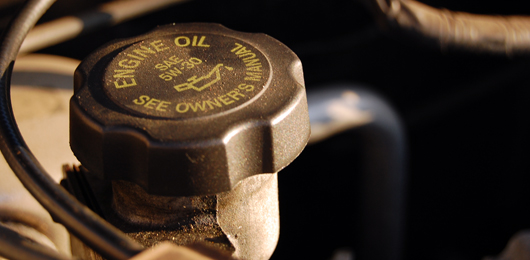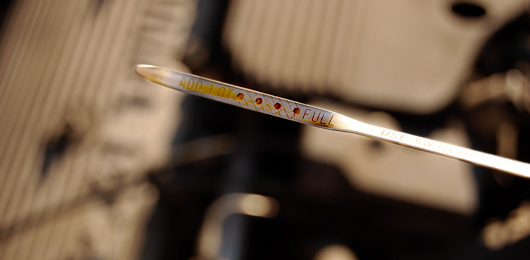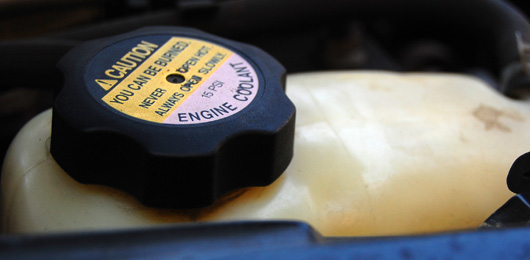Nothing makes you feel more like a man than working under the hood of your car, but sometimes it makes more sense to take it to the garage.
If you’ve ever done any work on a car, you may already realize that the mechanic is both the most overpaid and the most underpaid kid on the block. Some things are so easy that we’re getting robbed when we pay a mechanic to do them. Others are not so easy. Or not so quick. Or a lot more messy. But, in any case, definitely worth the money.
By Jesse Stern
Oil Change
It seems like only yesterday that you had an oil change, and now it's already time to do it again. The oil change is a simple procedure. It's probably the most frequent thing you will do to keep your car running. Thankfully, it's also the cheapest thing you'll ever pay a mechanic for. Doing it yourself is a messy job, and you can get a mechanic to do it for next to nothing.
Verdict: Pay a Mechanic!
Do It Yourself:
Easy, but messy. Cheap, but tedious. Get an oil bucket, five quarts of oil, and an oil filter at your auto parts store. Oil has two numbers on it, like 10W-30 or 20W-50. This is known as the oil's weight. Generally, the older the car, the higher weight you want, but check your car's manual for specifics.
Step 1: Open the oil cap under the hood. Crawl under the car and, with the oil bucket underneath, unscrew the bolt (usually around 9/16″) at the bottom of your oil pan (near the car's front center). Let the oil drain completely, then tighten the bolt back up.
Step 2: Unscrew the old oil filter, dab some oil around the seal of your new filter, and screw the new one on hand-tight, just right.
Step 3: Pour in 4 quarts of oil, and check the level. You may need a bit more to make it read full.
That's pretty much it. Oh, and you need to get rid of the used oil too. Gone are the days when it was cool to dump it in your neighbor's yard, take it to the beach and set it on fire, or pour it on a fast curve of highway. Most of the big auto parts stores, and some gas stations, will let you dump your used oil into their recycling barrel. Ask around.
Pay a Mechanic:
Unless you're completely broke, or you really love working on cars, this is the way to go. Shops charge the listed price, plus some fees for disposing the oil.
Tip: Synthetic oil, it is said, will drastically increase the life of your car. It's about twice as expensive, but you have to change it about half as often. Buy it by the case, along with a filter. Many smaller lube shops will charge only $10 for labor if you bring your own oil and filter.
Tip: Some shops have “patented” and expensive extras for oil changes, with names like VacuFlush and CleanTech. This is the extended warranty of the auto world. You're not a sucker, are you? I didn't think so. Don't bother.
Radiator Flush
The radiator flush is another simple procedure that keeps your car cooling properly, and keeps your radiator (or cooling system) from getting clogged with gunk, residue, toy dinosaurs, rust, and the like. It's easy to do, but also pretty cheap to pay for. You don't have to do it very often, and the only tricky part is getting rid of the stuff, which is toxic. Back in the day, you could just dump it into a lake somewhere, but then people started asking questions and caring about dolphins, meddling and creating laws…. So, again, take the waste to a recycling station. Most auto parts stores will do this, or can at least send you in the right direction. You should do a radiator flush at least once. Otherwise, you'll never know what you're missing!
Verdict: Do it yourself!
Do It Yourself:
You will probably need several containers for the various stages of this process. Make sure the engine is completely cool, and remove the radiator cap. Get your catcher bucket under the radiator and unscrew the little plug at the bottom. Drain the fluid.
Now, the Redneck Flush Method is to skip the catcher bucket, and to run water from a hose through the radiator until the water comes out crystal-clear. This makes a big mess, kills kittens, and releases toxic chemicals into the ocean. If you are vegetarian, or have any sort of environmental conscience, it's probably best to avoid this method. Actually, radiator fluid is extremely toxic, so forget I mentioned the Redneck Flush Method, and do the following:
Replace the plug, pour in some radiator flush solution, then fill with water. replace the cap, turn on the engine, and turn on the heat. Let the car run for 10 or 15 minutes, shut it off, then wait for it to cool off again. Drain the fluid, replace the plug, fill with coolant solution.
Note: Most coolant these days is already mixed. This is called 50/50 coolant. If your coolant does not say 50/50, you need to mix it with an equal amount of water.
Pay a Mechanic:
Most oil change locations will also flush your radiator. It usually costs somewhere between $60-75. As with the oil change, avoid expensive extras with names like FlushTech and VacuBlast.
Note: Never, ever open the radiator cap when the engine is warm or hot. It will spray boiling-hot, toxic coolant all over your nice clothes. This has, um, never happened to me, but I've heard stories.
Transmission Fluid
This is pretty similar to an oil change. The transmission is what controls the car’s drive motion. When the normally reddish fluid gets dirty, clogged or low, the car will sometimes “slip”, or rev in place for a moment before catching in-gear. The transmission is a very important part of your car’s life and proper functioning. For this reason, and since I’ve never actually bothered to do it myself, I’ll suggest leaving it to the professionals.
Verdict: Pay a Mechanic!
Do It Yourself:
If you’ve never done it before, find a buddy who can walk you through it. It’s a bit more difficult than changing the oil, because on most cars it’s harder to reach. Otherwise, the technique is the same: Drain and fill. Figure it out. If you can’t figure it out, don’t ask me, ask Scooter.
Pay a Mechanic:
Usually somewhere between $80-12.

















